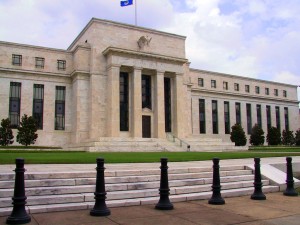 The world has experienced profound changes recently regarding energy and the economy. Fossil fuels, while still abundant, are becoming more costly to develop as the most easily-accessible resources become depleted. Many renewable energy technologies are becoming less costly due in part to market forces as well as supportive state and federal energy policies. These technologies however would require massive capital investment to replace fossil fuels at current scale. Global demand for energy continues to climb while advanced economies are becoming less energy-intensive when measured per unit of GDP.
The world has experienced profound changes recently regarding energy and the economy. Fossil fuels, while still abundant, are becoming more costly to develop as the most easily-accessible resources become depleted. Many renewable energy technologies are becoming less costly due in part to market forces as well as supportive state and federal energy policies. These technologies however would require massive capital investment to replace fossil fuels at current scale. Global demand for energy continues to climb while advanced economies are becoming less energy-intensive when measured per unit of GDP.
Meanwhile, a global financial crisis as well as mounting public and private debt have cast a shadow of lingering uncertainty over the world economy. Conventional thinking suggests an eventual return to “normal.” But slowing growth, increasing inequality, and a sense that an apparent recovery remains fragile are driving concerns that the world has entered a new era, where classic economic rules and tools may no longer apply.
In his book The End of Normal – The Great Crisis and the Future of Growth, noted economist James Galbraith explores how these trends may be related and converging to define a new normal. He describes how the role of energy in economic activity was well-known in classical political economics, but was essentially forgotten in the growth theories that have dominated economic thinking for the past half-century or more.
In particular, the decades immediately following World War II were a time of unparalleled economic growth and increasing income equality. Energy production, consumption, and efficiency all saw significant increases, and energy expenditures as a percentage of GDP steadily declined. But, as shown by my own work (here, here and here), around the year 2000, a 100+ year trend of continually declining energy and food expenditures came to an end. Re-discovering the energy-economy connection is important to making sense of the recent past and the outlook for the future.
As you suggest, whether or not it constitutes a ‘new normal,’ the world economy has experienced a deficit of growth for several years. Also, over time the economic productivity of… Read more »
Lewis, Right on. On your comment about Jevons’ Paradox and Roger Pielke Jr.’s “Iron Law” … yes, I agree with you 100%. This is why I actually spend time listening… Read more »
The global economy must transition to clean energy sources to maintain a long-term sustainable development path and livable environment in the future. The United States would gain three major long-term… Read more »
Jesse Jenkins demonstrated convincingly in his 3-part essay here why that kind of carbon tax has virtually no chance of political adoption.
Lewis: Jesse Jenkins’ objections to a carbon fee do not apply to a Fee and Dividend policy where all the money collected is distributed to every legal resident on an… Read more »
A transition to a clean energy economy will drive economic growth. Fossil fuels are the most expensive energy source when all costs (direct and external) are accounted for. External costs… Read more »
Dan, I agree with your sentiments on fossil fuels being more expensive when we account for externalities such as health impacts from emissions, but the marginal damages from (criteria) emissions… Read more »